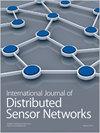虚拟现实辅助装配仿真中全身跟踪的多运动融合
IF 2.5
4区 计算机科学
Q3 COMPUTER SCIENCE, INFORMATION SYSTEMS
International Journal of Distributed Sensor Networks
Pub Date : 2022-05-01
DOI:10.1177/15501329221097591
引用次数: 5
摘要
事实证明,基于多Kinect数据融合的骨骼跟踪比单一Kinect具有更好的准确性和鲁棒性。然而,以往的工作没有考虑到Kinect跟踪领域的跟踪精度不一致和装配操作中人体的自遮挡,而这对装配任务仿真中多个Kinect数据的融合性能至关重要。在这项工作中,我们开发了一种多kinect融合算法,以实现虚拟现实(VR)辅助装配仿真中的鲁棒全身跟踪。首先应用两个可靠度函数来评估反映位置相关误差和自遮挡误差对被跟踪骨架影响的跟踪置信度。然后,基于加权算术平均和广义协方差交点对多个节点的跟踪骨架进行融合;为了评估跟踪置信度,采用椭球面拟合对Kinect的跟踪精度分布进行建模,研究了用户-Kinect交叉角度与自遮挡对身体不同部位跟踪的影响之间的关系。在此基础上,建立了两种可靠性函数。我们实现了一个利用6个节点的原型系统,并在系统中应用分布式计算来提高计算效率。实验结果表明,该算法具有较好的融合性能。本文章由计算机程序翻译,如有差异,请以英文原文为准。
Multi-Kinects fusion for full-body tracking in virtual reality-aided assembly simulation
Skeleton tracking based on multiple Kinects data fusion has been proved to have better accuracy and robustness than single Kinect. However, previous works did not consider the inconsistency of tracking accuracy in the tracking field of Kinect and the self-occlusion of human body in assembly operation, which are of vital importance to the fusion performance of the multiple Kinects data in assembly task simulation. In this work, we developed a multi-Kinect fusion algorithm to achieve robust full-body tracking in virtual reality (VR)-aided assembly simulation. Two reliability functions are first applied to evaluate the tracking confidences reflecting the impacts of the position-related error and the self-occlusion error on the tracked skeletons. Then, the tracking skeletons from multiple Kinects are fused based on weighted arithmetic average and generalized covariance intersection. To evaluate the tracking confidence, the ellipsoidal surface fitting was used to model the tracking accuracy distribution of Kinect, and the relations between the user-Kinect crossing angles and the influences of the self-occlusion on the tracking of different parts of body were studied. On the basis, the two reliability functions were developed. We implemented a prototype system leveraging six Kinects and applied the distributed computing in the system to improve the computing efficiency. Experiment results showed that the proposed algorithm has superior fusion performance compared to the peer works.
求助全文
通过发布文献求助,成功后即可免费获取论文全文。
去求助
来源期刊
CiteScore
6.50
自引率
4.30%
发文量
94
审稿时长
3.6 months
期刊介绍:
International Journal of Distributed Sensor Networks (IJDSN) is a JCR ranked, peer-reviewed, open access journal that focuses on applied research and applications of sensor networks. The goal of this journal is to provide a forum for the publication of important research contributions in developing high performance computing solutions to problems arising from the complexities of these sensor network systems. Articles highlight advances in uses of sensor network systems for solving computational tasks in manufacturing, engineering and environmental systems.

 求助内容:
求助内容: 应助结果提醒方式:
应助结果提醒方式:


